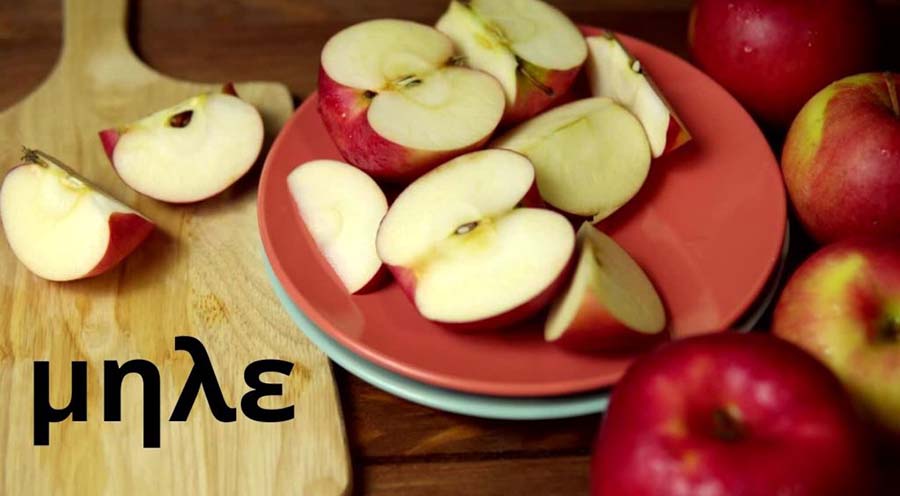An apple has been representing health, knowledge and temptation for years. This innocent fruit has an interesting background, several types and numerous health advantages. In this article, we shall explore through the essence of μηλε how they came to be, what different types there are, what nutritional benefits can be found in them and their cultural Significance.
The Origins and History of μηλε
Like its fruit, the history of the apple is very diverse. It was designed by nature to grow in temperate climates worldwide. Malus Domestica, or the common apple tree, is believed to have originated from Central Asia, especially Kazakhstan, which is a mountainous region. Later on, ancient Greek and Roman civilizations spread apples across Europe as they realized they could be used for food and symbolically. The Greek name “μηλε” portrays a close association between this fruit and ancient cultures.
In several Greek mythologies, gods were said to love apples, implying that it was often associated with divine favour. For example, Hesperide’s golden apples were believed to bring immortality when eaten by humans. This, therefore, brings out the Significance of the place it held among Greeks during those times. Eventually, it became one of the most widely grown fruits around the globe after being transported by explorers, traders and settlers, thereby crossing continents.
The Diverse Varieties of μηλε
The variety within an apple is incredibly intriguing. There are over 7,500 known types of apples, each with distinct flavours, textures, colours, etc. From sour Granny Smiths to sweet Honeycrisps, there’s something for everyone among the many varieties available.
Common Apple Varieties
1. Granny Smith: They are identified by their bright green colouration and tartness; hence, they are used for cooking or baking because they are authoritarian.
2. Red Delicious: The deep red colour and sweet, mild taste usually make these apples easy to identify. They are often eaten fresh.
3. Gala: These yellow-orange-skinned and red-striped fruits are sweet and fragrant. They can be used in salads and sauces or taken as they are.
4. Fuji: Originating from Japan, Fuji apples are big, crispy, and juicy with balanced sweetness, making them very good for eating raw and cooking.
Lesser-Known Varieties
1. Pink Pearl: It has a pinkish-red flesh which is tart with a berry-like flavour. It is mainly used for its appearance when making salads or serving desserts.
2. Cameo: Cameo apples fall under the apple category with a firm texture and a taste that is both sweet and sour, thus suitable for both tables and baking.
3. Ashmead’s Kernel: An old English sort of apple called Ashmead’s Kernel has russeted skin. Surprisingly, it tastes nutty and hence is highly valued among apple experts.
Nutritional Benefits of μηλε
This famous saying has some scientific basis; therefore, an apple per day keeps the doctor away. This means that several nutrients are found in this fruit, contributing to the overall well-being of any person who takes it more often than not.
Vitamins and Minerals
Apples fall within foods rich in vitamins C & A, which help boost immune system functions and maintain good skin health. Low levels of vitamins K, E, and B complex exist just like vitamins included herein participate actively in energy metabolism alongside blood cell formation.
Fiber Content
Fiber is another remarkable thing about apples. In a medium-sized apple, roughly four grams of dietary fibre help digestion, maintain healthy blood sugar levels and support heart health by reducing cholesterol.
Antioxidants
The antioxidants found in apples include quercetin, catechins and chlorogenic acids. These compounds reduce inflammation, oxidative stress and the risk of chronic diseases, including cancer, diabetes and heart disease.
Cultural Significance of μηλε
The Cultural Significance of μηλε goes well beyond its nutritional value. Apples have been celebrated for ages throughout different cultures across the globe, including in folklore, art, and literature.
Symbolism in Mythology and Religion
Apples symbolize dissimilar things in various cultures. For instance, the apple has been used as the forbidden fruit in Christianity’s Garden of Eden, depicting temptation and the downfall of human beings, among other texts. On the other hand, in Norse myth, golden apples from Idunn represent everlasting youth, thus symbolizing life and rejuvenation.
Apples in Folklore and Literature
Apple symbolism is quite popular in myths as well as fairy tales. There are countless ways people have imagined this fruit, from Snow White’s poisoned apple to Sir Isaac Newton’s understanding of gravity. The stories also tell how an apple can give life or cause danger.
Apples in Modern Culture
Today, apples continue to be relevant symbols within modern society. They form part of staple foods worldwide, while their Significance is marked through festivals such as Apple Day celebrations. Apple picking is one common autumn tradition in many countries, denoting crop harvesting periods alongside changing weather seasons.
Also Read: Piperens Insights: Discovering Its Health Benefits for Your Diet
Conclusion
However, this object called apple (μηλε) is not an ordinary fruit at all. It has a great historical background, comes in numerous varieties, and contains many valuable elements that make it a natural wonder of nature. It would not be wrong to say that from where it started, i.e., in central Asia till now, the apple has signified food, culture, and miracles worldwide. It can be eaten fresh, baked or made into a tasty cider; it remains an ageless fruit for all time, which brings richness to our lives in many ways.











